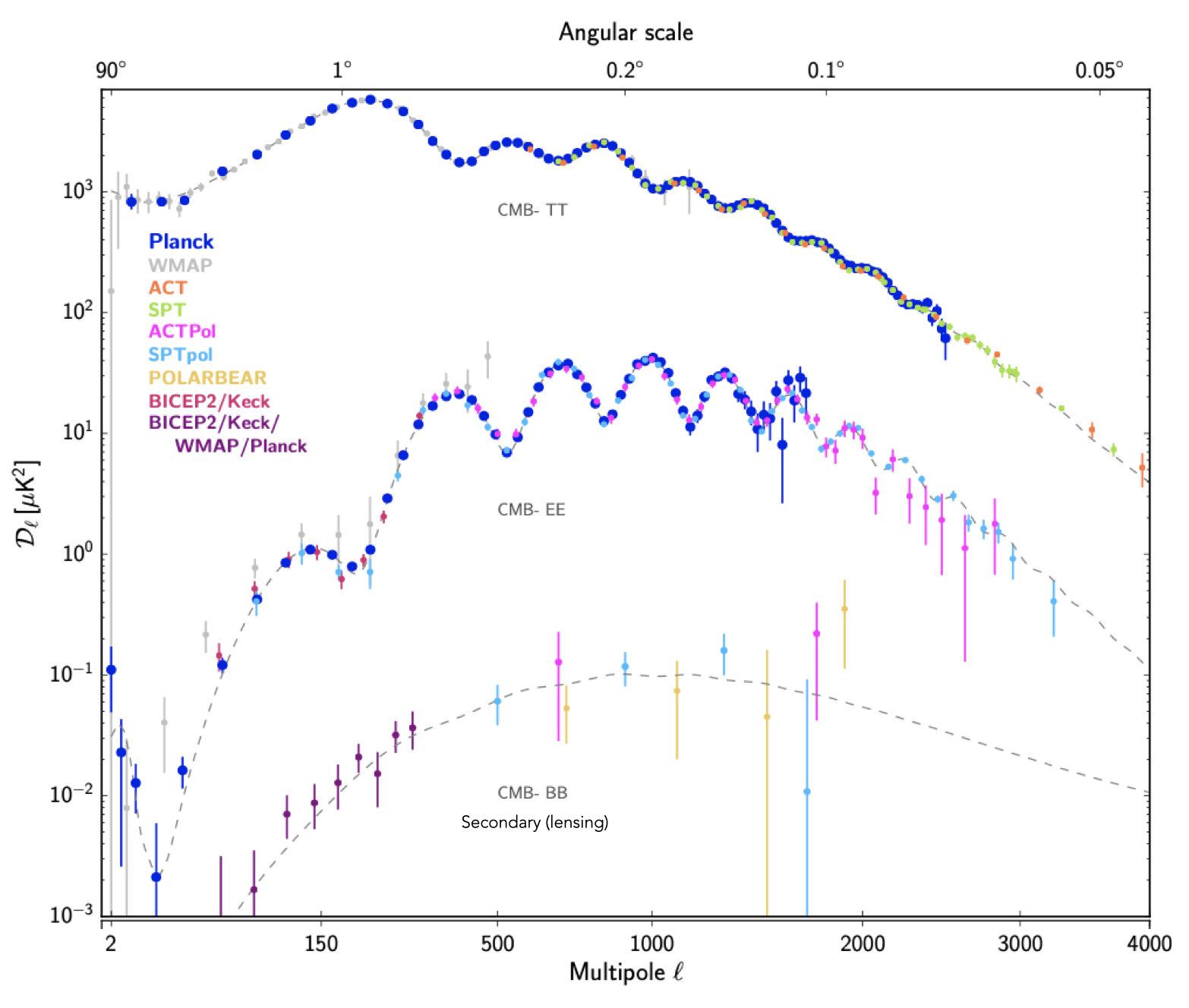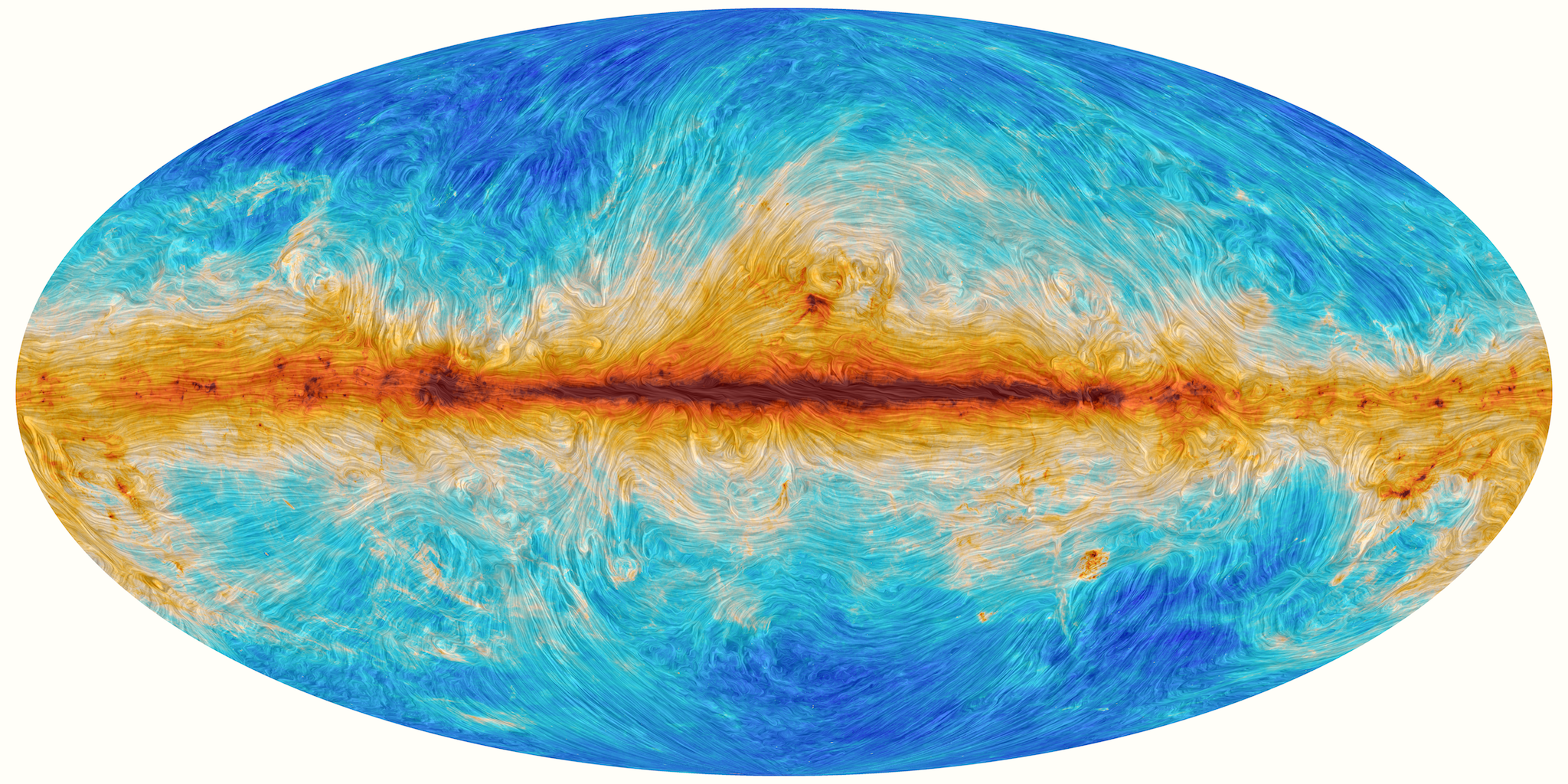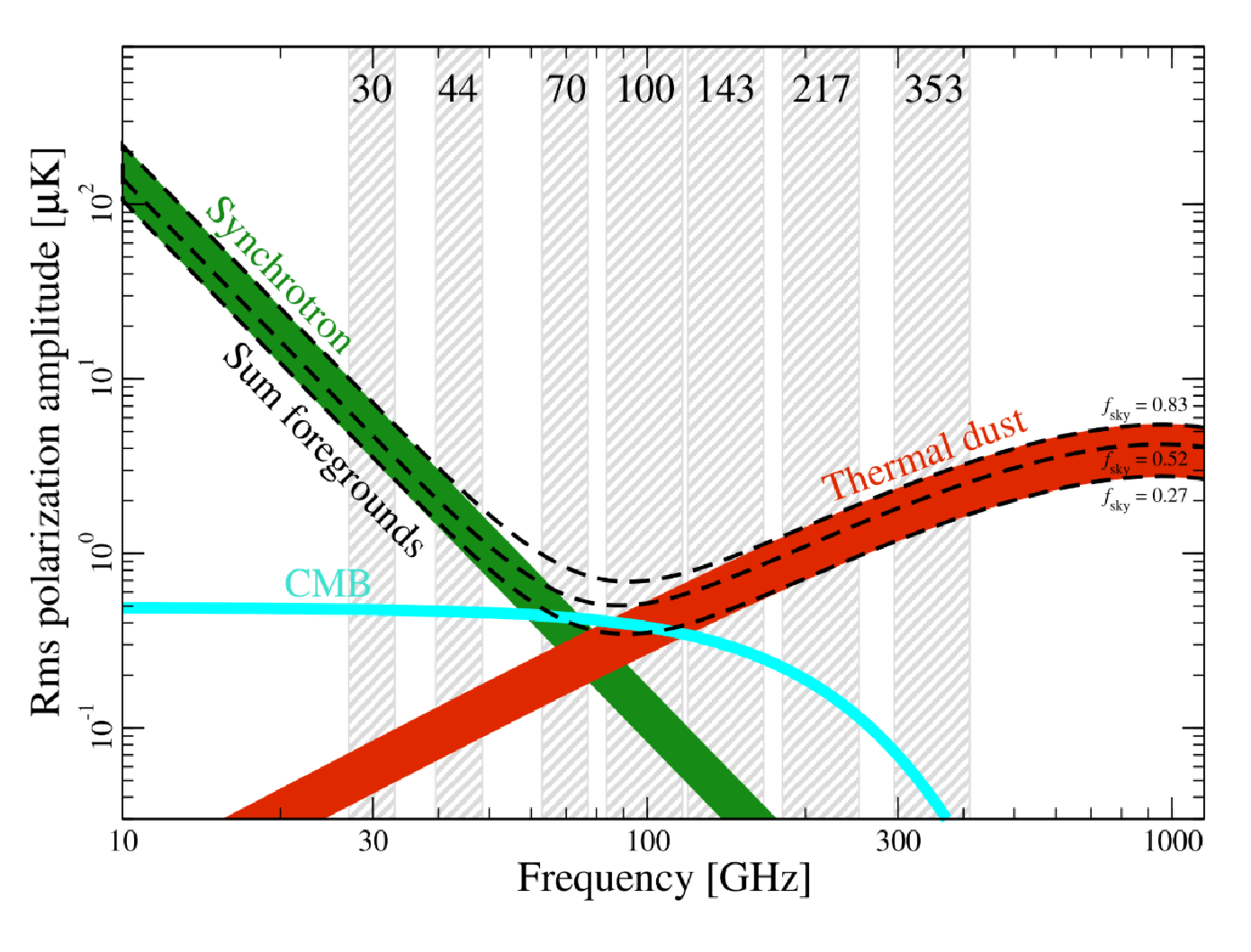The cosmic microwave background signal
You always see things in the past! This is the unavoidable consequence of the finiteness of the speed-of-light. While this fact is completely negligible in our daily life, it has an enormous impact on astrophysical scales, such that stars and Galaxies are seen as they were long ago in the past history of our Universe (ranging from ~8 minutes for our Sun to some 13,4 billion years the oldest Galaxies). One can thus legitimately wander how far this game can be played. The answer is given by the cosmic microwave background (CMB) signal, which is factually the oldest light in the Universe, observable over the whole sky. It depicts the early Universe as it was around 13.8 billion years ago, some 380000 years after its birth (the primordial singularity). All matter was then in the form of a hot and dense plasma. This state can be understood in the framework of the Universe expansion. Going back in time, its content was.


Left: The anisotropies of the CMB signal as measured over the whole sky by the Planck mission (in intensity) Right: primordial angular power-spectra of the CMB as measured by various missions [Planck 2018I].
The CMB was emitted when the Universe cooled down enough for the first atoms to form (known as recombination). The Universe, previously opaque due to the scattering of photons on the charged free electrons, became suddenly transparent. The CMB signal is thus a gold mine for cosmology as it allows both to investigate the physics at play at very early time in our Universe and the evolution of our Universe as a whole.
The Foregrounds challenge


Left: Galactic magnetic field traced by the dust polarized signal from Planck data at 353 GHz Right: Rms of the polarized amplitude of foregrounds compared to the one of the CMB [Planck 2018I]